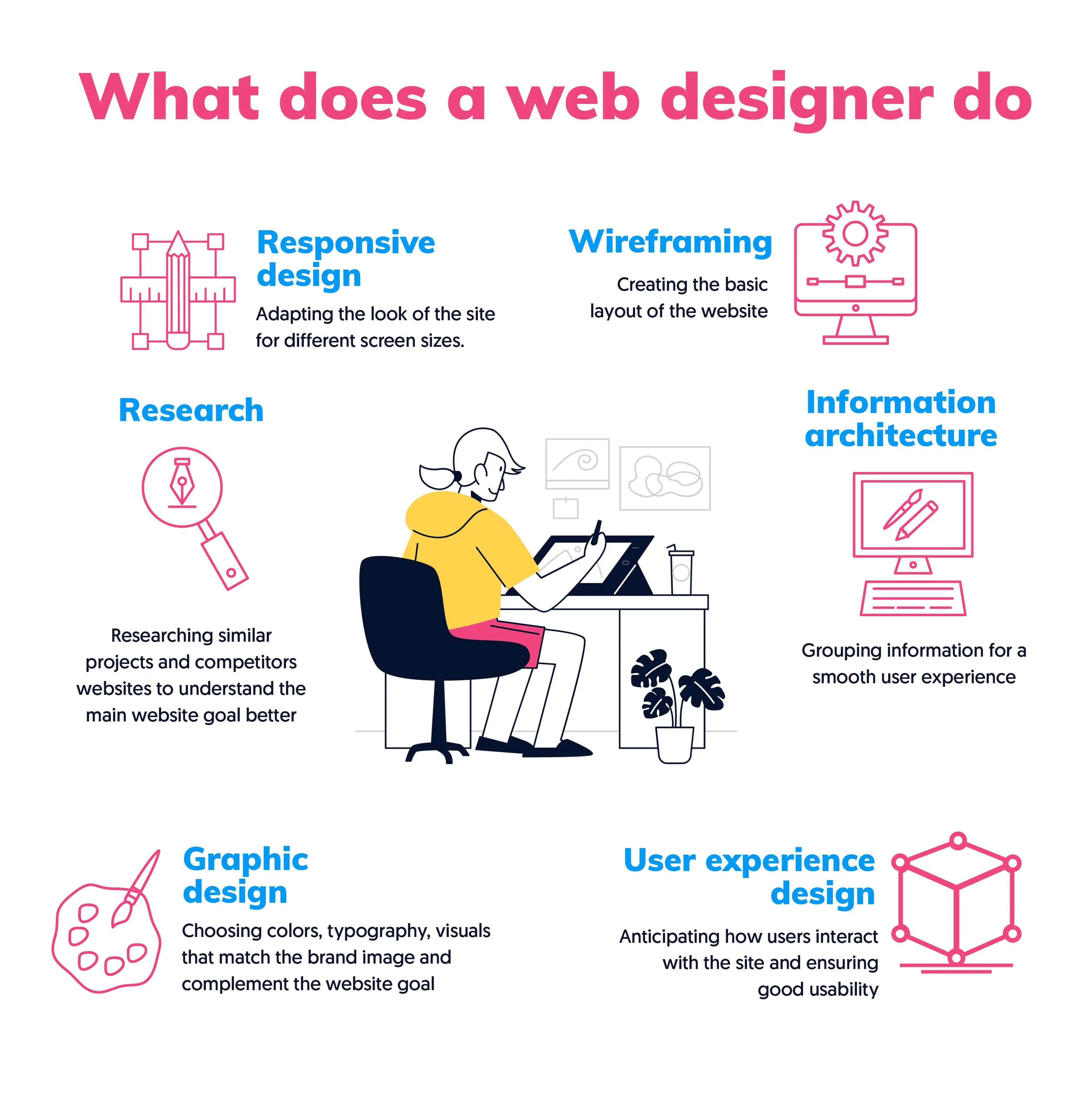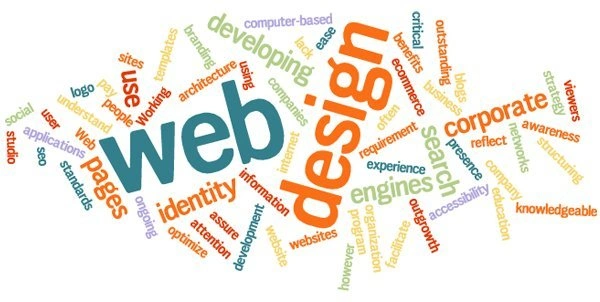Aligned Position Web Design: Crafting Visually Appealing Websites for Modern Businesses
Aligned Position Web Design: Crafting Visually Appealing Websites for Modern Businesses
Blog Article
The Very Best Types of Web Design to Improve User Experience and Interaction
In the ever-evolving landscape of electronic interaction, the performance of Web design substantially influences user experience and interaction. Different layout approaches, such as minimal, receptive, and interactive formats, each deal one-of-a-kind benefits that can provide to varied customer demands.
Minimal Web Style
As digital landscapes end up being progressively messy, minimalist website design has actually become an effective technique to improving individual experience. This style approach prioritizes simplicity, focusing on vital aspects while eliminating unnecessary interruptions. By using sufficient white space, straightforward navigation, and a limited shade scheme, minimal style promotes clearness and directs individual attention to key web content.
The core concept of minimalist Web style is to produce a smooth communication for users. By reducing cognitive lots, individuals can swiftly realize info without feeling bewildered. This direct strategy not only improves functionality but additionally motivates engagement, as site visitors are much more most likely to check out a website that is visually appealing and simple to browse.
Additionally, minimalist style usually highlights typography and imagery, utilizing these aspects purposefully to communicate messages effectively. This emphasis on important parts can improve brand identification and produce a remarkable user experience. In significance, minimalist website design is not just a fad; it is a thoughtful approach that identifies the importance of user-centered style. By removing away supplementary elements, designers can develop a more appealing, effective, and enjoyable Web experience for all individuals.
Receptive Web Design
In today's diverse electronic setting, receptive website design has ended up being crucial for creating a seamless user experience across a plethora of devices. As users gain access to web sites on smart devices, laptops, tablet computers, and desktop computers, the capability of a web site to adjust its design and material to different screen dimensions and resolutions is essential.
Responsive website design uses adaptable grids, photos, and CSS media questions to make certain that Web content exists optimally, no matter of the tool utilized. This technique not only enhances the aesthetic appeal of a web site but also substantially boosts functionality. Individuals are a lot more likely to engage with a website that uses a constant experience, as it eliminates the frustration of needing to zoom in or scroll exceedingly.
Additionally, internet search engine, including Google, prioritize mobile-friendly web sites in search rankings. By taking on receptive layout, services can improve their presence and reach a broader target market. This technique additionally simplifies website upkeep, as a solitary version of the site can deal with all tools, lowering the need for numerous versions. In recap, receptive website design is a basic practice that boosts user experience, involvement, and overall fulfillment.
Interactive Web Style
Responsive website design prepares for boosting user experience, yet interactive Web style takes this a step even more by involving users in a more vibrant means - Aligned Position Web Design. By including elements such as animations, clickable prototypes, and real-time feedback, interactive Web design captivates individuals, attracting them right into a richer browsing experience
This method not only fosters interaction yet likewise urges customers to check out content proactively as opposed to passively consuming it. Techniques such as gamification, where customers gain rewards for finishing jobs, can significantly improve the moment invested in a website and boost total contentment. Furthermore, interactive functions can streamline complex details, making it much more delightful and digestible.

Incorporating interactive design discover this info here components can likewise bring about greater conversion rates, as individuals are most likely to engage with a site that actively entails them. Aligned Position Web Design. Eventually, interactive website design transforms user experiences right into unforgettable trips, making sure that site visitors return time after time
Flat Style
Defined by its minimalistic approach, level style stresses simpleness and capability, removing away unneeded aspects and focusing on necessary functions. This style viewpoint focuses on use, making certain that individuals can navigate interfaces easily and performance. By using a clean aesthetic, flat design eliminates the mess frequently discovered in extra ornate designs, therefore improving user emphasis on content and performance.
The trademark of level layout depends on its use vibrant shades, basic typography, and geometric shapes. These components add to a visually appealing user interface that is both friendly and contemporary. In addition, level style cultivates a feeling of quality, enabling users to determine important activities and information without diversion.
In addition, flat layout is particularly effective in responsive Web style, as its simpleness equates well across different devices and screen sizes. The absence pop over to this web-site of elaborate structures and slopes minimizes filling times, which is vital for preserving customer interaction. As electronic landscapes continue to evolve, flat design continues to be an appropriate option for producing straightforward internet sites that boost total experience. By concentrating on important attributes, flat style not only meets user needs yet likewise urges seamless communication, making it a vital element of efficient Web layout methods.
Adaptive Web Style
Flexible Web layout customizes the individual experience by producing several dealt with layouts tailored to different screen sizes and gadgets. Unlike responsive layout, which fluidly readjusts a single layout, adaptive style utilizes unique formats for details breakpoints, guaranteeing ideal presentation on different platforms. This technique enables designers to concentrate on the special features of each tool, boosting use by supplying specifically what customers require based upon their context.
Among the main benefits of adaptive Web design is its ability to enhance load times and performance. By serving tailored web content and photos that fit the customer's gadget, internet sites can decrease information use and enhance loading speeds. This is particularly useful for users with slower connections or minimal information plans.

Furthermore, flexible style promotes a more regulated and consistent branding experience. Because developers create several formats, they can guarantee that the aesthetic elements align with the brand name's identification across different systems - Aligned Position Web Design. This results in a cohesive customer experience, enhancing interaction and advertising user retention
Final Thought
Minimalist design fosters quality and emphasis, while receptive style makes sure versatility across various devices, promoting accessibility. Collectively, these design comes close to add to the development of easy to use environments that not only improve satisfaction yet additionally drive greater conversion prices, highlighting their vital significance in contemporary Web layout approaches.

Minimal design promotes clearness and emphasis, while receptive layout makes certain flexibility across various gadgets, advertising accessibility. Jointly, these layout approaches contribute to the development of easy to use atmospheres that not just improve contentment yet additionally drive higher conversion prices, highlighting their essential value in modern Web design strategies.
Report this page